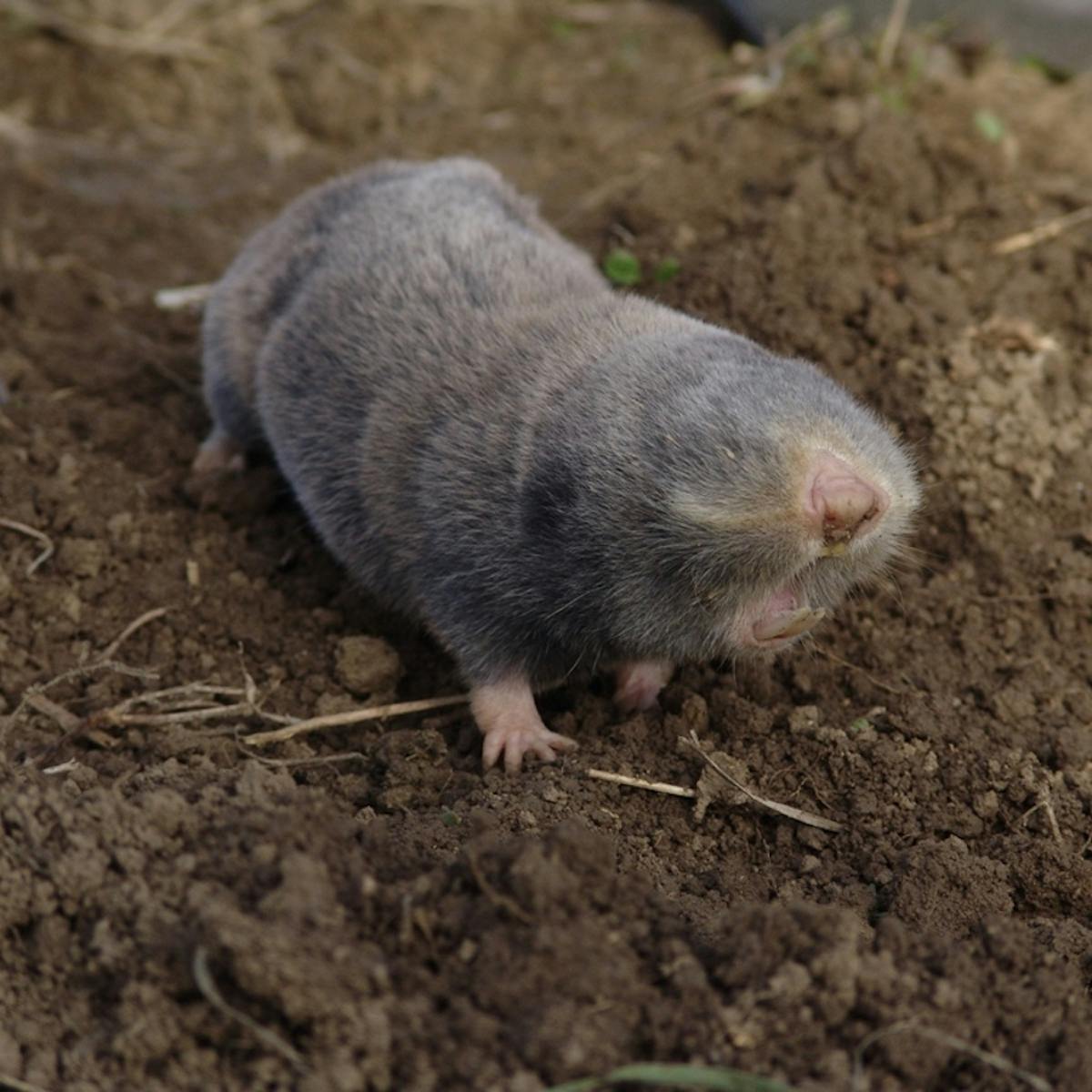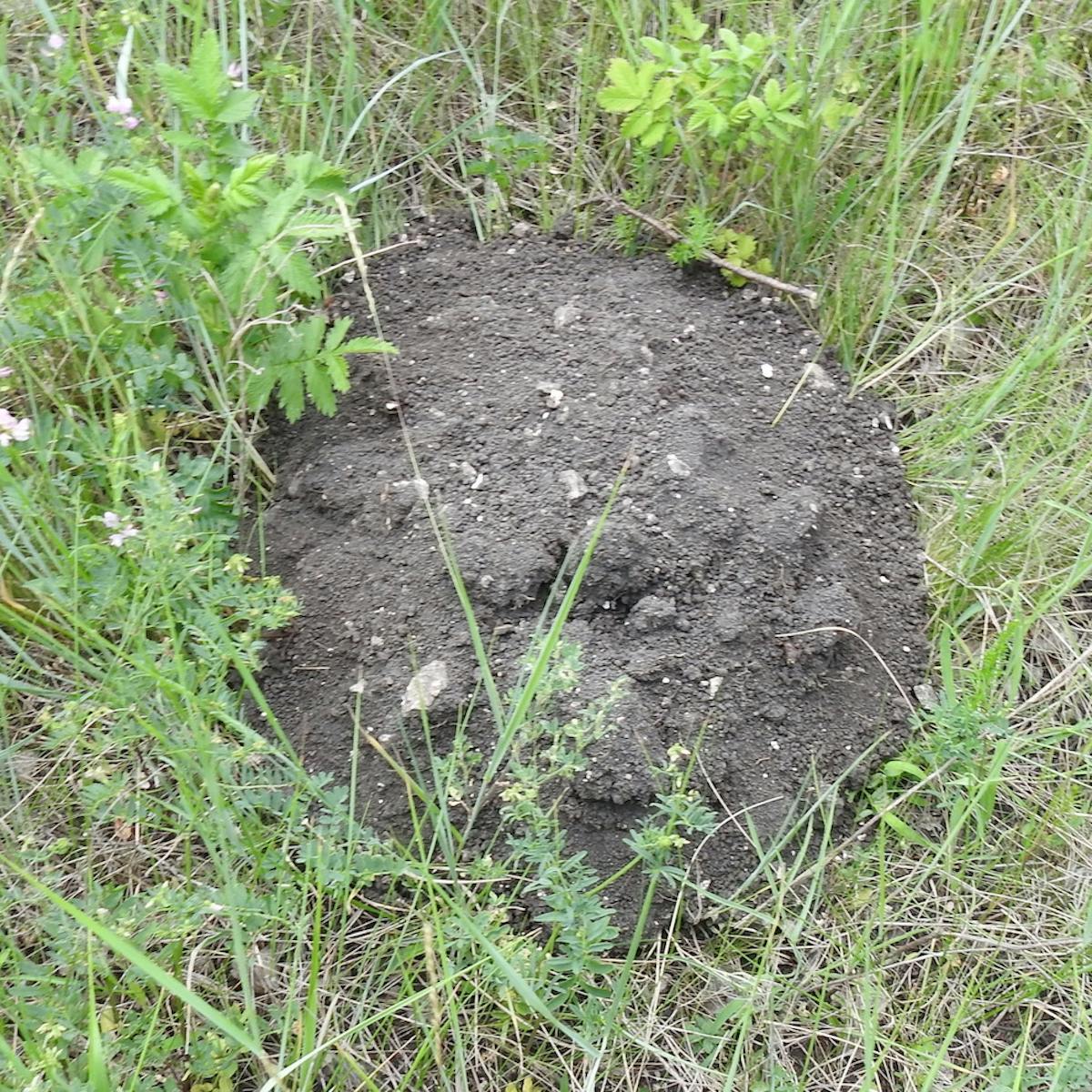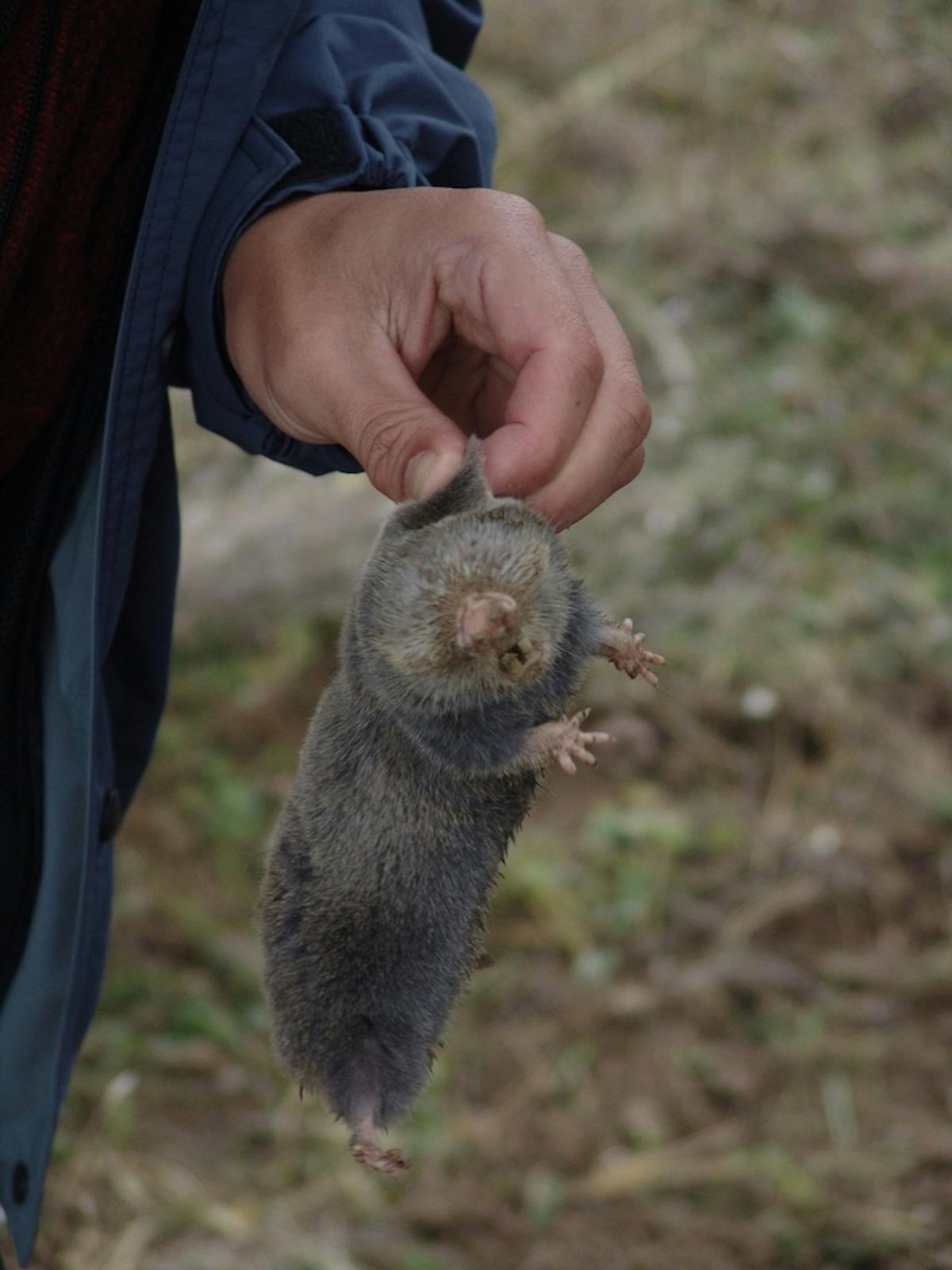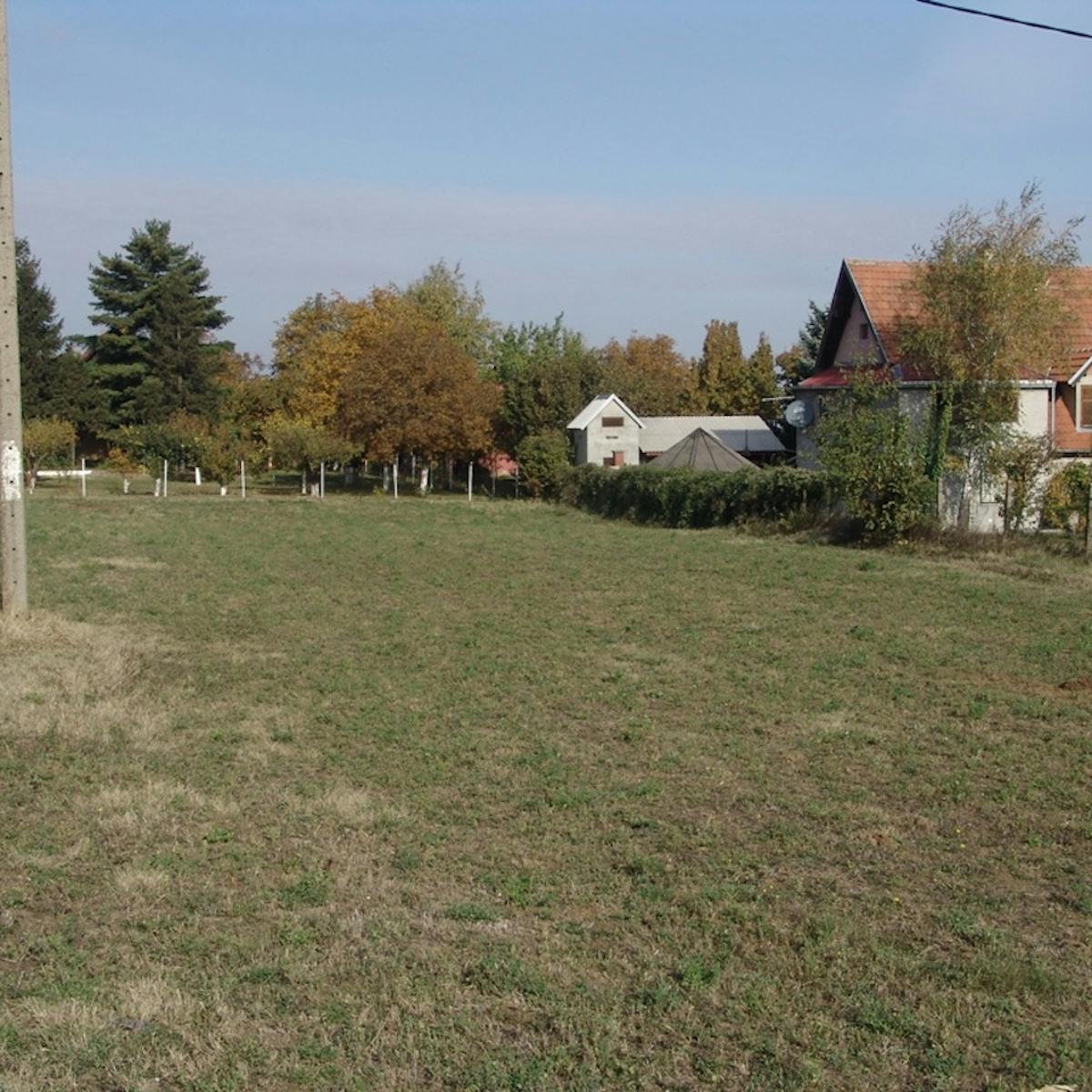- Management Plan
- Total budget: £5,000
- Status: In Progress
The lesser blind mole rat, a peculiar underground rodent, has been rediscovered in Croatia. Thought to be regionally extinct, sightings of this small subterranean mammal provide new hope for the future of the species in the country. Spending most of its life underground building complex tunnel systems, these mole rats have an interesting effect on the areas they inhibit. As ecosystem engineers, their burrowing behaviour affects soil structure and species composition. Having already suffered a difficult past being branded as agricultural pests, we are working quickly with partners, BIOTA, to prevent the Croatian population from vanishing again. This mission begins with addressing a knowledge gap through detecting the newly discovered population using eDNA analysis and assessing their status and threats.
Project Timeline
May 2023 - Summer 2024
Develop eDNA primer.
Spring 2024
Further site visits to continue dialogue with local farmers, soil sampling new potential sites identified during the first visit, conduct the second mole rat survey and plan conservation action.
read moreA Uniquely Adapted Rodent
Physical Characteristics
The lesser blind mole rat (Nannospalax leucodon) has some highly specialised physical adaptations. Unlike some mole rats belonging to the family of rodents called Spalacidae and despite its name, the lesser blind mole rat is not completely blind. Its tiny (1mm) eyes are sunken beneath its skin and fur that act as light sensors. Adults typically range from 11 to 16 cm in length but can grow as much as 27 cm. These characteristics along with its cylindrical tailless body, no external ears, fur coat and protruding incisor teeth, make it uniquely adapted to life underground.
Habitat & Distribution
Being well equipped to spend most of its time burrowing beneath the surface, this rodent is capable of building impressive long tunnels. To do this, it prefers areas with a deep layer of loose, draining soil that can be easily dug. The mounds they create appear like molehills, only bigger, and are used for foraging, nesting and shelter. This particular species is found across Eastern European lowland meadows and pastures where there is a semi-steppe climate.
Behaviour & Diet
As a solitary species, lesser blind mole rats live separately in special corridor systems. They only encounter others during mating season (January and February) with a gestation period of about 3-4 weeks. After this time, females typically produce litters of 2-6 babies. Mole rats are mainly active during the night, when they emerge from their tunnels in search of food. Their diet predominantly consists of potatoes, onions, carrots, parsley and other tuberous shoots. Possessing strong incisors allows them to gnaw through an assortment of plant material.

Below ground behaviours impacting vegetation above
Burrowing animals are important ecosystem engineers of open habitats. In the case of the lesser blind mole rat, through their burrowing they shift large amounts of soil creating sparsely vegetated areas. Studies have found these patches often consist of different vegetation from the surrounding habitat. In this sense, the lesser blind mole rat is considered to engineer its environment to benefit biodiversity. Their impact on vegetation happens in the following ways:
- By consuming below ground plant organs like bulbs and roots, they help reduce certain plant species abundance. Conversely, any leftover organs a mole rat doesn’t eat, can sprout later.
- Mole rat mounds allow for areas of open soil surface which affects vegetation dynamics and can increase species diversity.
- The presence of such underground species impacts soil structure and parameters.

From abundance to ‘extinction’ in Croatia
The story of the lesser blind mole rat’s demise is one of land use change and the resulting loss of its habitat.
Years of increasing agricultural intensification, urbanisation and infrastructure development, meant the species’ natural habitat of grasslands and pastures gradually gave way to other land uses. Mole rat populations withered as these habitats were ploughed and the animal began adapting to life on agricultural landscapes. It’s on these private fields of pastures, small crop-fields and orchards the mole rat caused damage and suffered persecution. Eventually, the species was declared extinct in Croatia in 1984. After almost three decades without a single sighting, the existence of a small population was confirmed in 2023 in Vučedol, near the banks of the Danube River. Being the only known population and recently discovered, there is little knowledge on their status and current threats.
The urgency to gather data
There is a fear among conservationists from BIOTA that after the attention and excitement of discovering this new population settles, the species will be deemed a pest once more. It is therefore essential to gather information quickly to safeguard the species and avoid it slipping ‘back’ into extinction. Their survival would not only be of conservation value but they would also improve the landscape ecologically through the mole rat’s role as an ecosystem engineer.

Our Project
The two key objectives of this project are:
- to address the knowledge gap on this newly discovered population;
- to serve as a rapid response to prevent its potential extinction.
To achieve the first objective biologists from BIOTA intend to develop a non-invasive and cost-effective eDNA based approach to detect this secretive species. This involves identifying a sequence in the DNA of lesser blind mole rats that can be used to distinguish it from other species and then analysing soil from active tunnels to validate the method. We hope that by developing and validating this eDNA approach, we will make it faster and cheaper to assess the distribution of the species and that this will allow us (and anyone else working to conserve the species) to be more data-driven in our efforts to help this species bounce back.
The second objective will require the team to act quickly on several fronts involving:
- assessing the status and threats to the newly detected population;
- engaging key stakeholders;
- identifying appropriate solutions and conservation actions to tackle the threats and ensure the species’ pervaliance.
BIOTA will conduct an assessment of the species’ status and threats, including a survey at the site and suitable locations surrounding the confirmed sightings. One of the main aims is to evaluate the presence or absence of the species, which will involve checking the areas for large molehills.
Discussions will also be initiated with local farmers and authorities to seek viable solutions for the coexistence of mole rats and farmers. Several actions can be explored, such as relocating the population or converting the surrounding available land into feedlots to reduce any potential damage to farmland.
We would like to thank our members for making it possible for us to set aside a budget of €5,000 to cover staff, equipment, materials and any urgent damage control measures that may be needed to facilitate the coexistence between the species and local people.
Stakeholder Engagement & Wider Benefits
The future of this species is tightly linked to the way it is perceived by the people who interact with it day to day. Therefore we believe that any measures designed to help the species recover have to be co-designed with local people through healthy dialogue and collaboration if they are to have a long lasting impact. This is especially important because the lesser blind mole rat can cause damage to crops and this is something that cannot be ignored as we look for ways of finding space for the species in the landscape.
Further benefits could also extend to these areas:
- Once developed and validated, the eDNA monitoring approach can be implemented by anyone that has the needed tools and skills. This could open the door for additional research and will also make it easier for the Public Institution for Management of Protected Areas of Nature in Vukovar-Srijem County to update the distribution of the species and make well informed management decisions.
- By collecting baseline data and shedding light on the situation, we will be laying the foundation for additional work. The data we collect may help to attract more funding to support the recovery of the species. The successful recovery of the lesser blind mole rat could become a reason for pride among the local community and perhaps attract interest from tourists visiting the City of Vukovar.
- This work should also generate momentum around this topic and facilitate the collaboration between different stakeholders including local landowners and public institutions.

We would like to thank our members for funding this project and our partners, BIOTA, for taking swift action to ensure the reappearance of this unique underground animal isn’t short lived.
Project Discussion
For more details of this intervention, check out the interview below with our conservation biologist and project manager, Tiago de Zoeten.
the team behind the project

Dušan Jelić, Researcher at the Croatian Institute for Biodiversity

Tiago de Zoeten, Conservation Biologist, Mossy Earth

Ana Pušić, Expert Associate at BIOTA

Petra Bajić, Senior Expert Associate at Biota
Sources & further reading

- “European rodent on the edge: status and distribution of the Vojvodina blind mole rat” - Attila Németh,1 György Krnács,2 Virág Krizsik,3 Tamás Révay,4 Dávid Czabán,3 Nikola Stojnić,5 János Farkas,1 and Gábor Csorba
- “A comparison of eDNA to camera trappingfor assessment of terrestrial mammaldiversity” - Kevin Leempoel, Trevor Hebert and Elizabeth A. Hadly